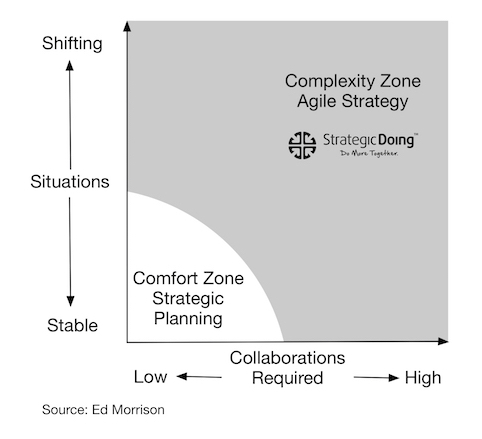The Growing Importance of Agile Strategy
We are seeing a growing demand for our work in agile strategy. Why is this so?
We see two major forces are at work. First, the environments in which most organizations operate has become far more complex, fluid and unstable. For the organization, this more volatile environment translates into a need to respond more quickly to shifting demands, emerging technologies, and new market realities.

In addition, making these adjustments requires higher levels of collaboration both inside and outside the organization. Designing and guiding these collaborations is a tricky business. A different set of factors — trust, shared value, mutual accountability — power effective collaborations. Participants in these collaborations need to understand these dynamics.
In short, the traditional strategy disciplines, designed for more stable environments with command-and-control managerial mindsets are rapidly becoming obsolete. That’s why people are turning to agile strategy, a set of protocols specifically designed to designing guide strategy in open, loosely connected networks.

The Founder of the Lab at UNA and co-author of Strategic Doing: 10 Skills for Agile Leadership, Ed’s work has focused on developing new models of strategy specifically designed to accelerate complex collaboration in networks and open innovation. He is the original developer of Strategic Doing.
